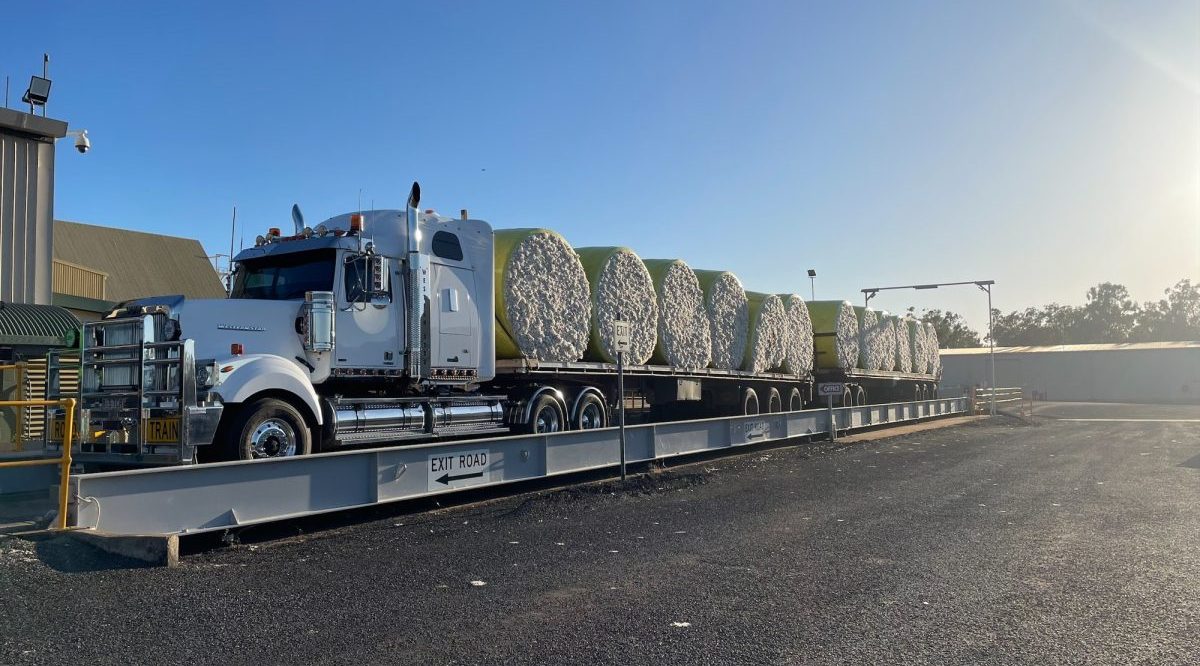
Modules arrive in the gin yard at Mungindi ahead of start up expected next week. Photo: Namoi Cotton
GINS across Australia’s cotton-growing regions are firing up as Australia’s biggest ginner, Namoi Cotton, chops its earnings forecast for the year to 28 February to $15-17 million.
Ahead of full-year results due out later this month, Namoi Cotton on March 29 announced it was expecting earnings for FY23 to be considerably lower than the $19-21M in its previously published guidance issued 22 December 2022.
Namoi said earnings have been negatively impacted by increased transport and storage costs related to the delayed execution of cottonseed sales, particularly in the export market in the last quarter of FY23.
The delayed ginning season is also expected to have an impact by extending the sale of cottonseed and mote which will be realised in FY24.
In its revised earnings forecast for FY24, Namoi said Australian cotton production from the crop now being ginned is forecast to be above average, but below last year’s output of 5.6Mb.
ABARES in March forecast Australian cotton production of 5.3Mb and the February 2022 edition of Cotton Compass forecast 4.9Mb.
Namoi expects to gin 900,000-1.1Mb of cotton this season, which compares with 953,000b ginned from March to August 2022, which does not include volume from the closing months of the ginning year.
Five gins running
In Queensland, of the 10 functioning cotton gins, three are now in operation.
They are: LDC Emerald; Queensland Cotton Moura; and Cubbie Ginnery at Dirranbandi.
QC’s Cecil Plains and Dalby gins on the Darling Downs and the LDC Emerald gin are expected to start up next week, with others to follow.
In NSW, only two of the state’s gins — Namoi Cotton’s Merah North and Queensland Cotton’s Wee Waa — have started ginning.
More than 20 others are expected to gin this season, and most are due to start up in the next month.

QC receives the first load of modules for the ginning season at Cecil Plains on Tuesday. Photo: Queensland Cotton
Australian Cotton Ginners’ Association president Ben Suttor said harvesting and processing of cotton is well under for the season, and considerations for the coming harvest include moisture management, contamination, and module management.
“Maintaining low levels of moisture and trash at picking can only enhance shelf life of cotton modules and maintain the best possible colour grade.”
Increased moisture promotes microbial activity that yellows and dulls lint colour grade, and excessive levels of trash in modules can also impact grade.
Mr Suttor said plastic contaminant can cause major problems and it was thus essential that the industry did all it could to prevent plastic wrap making its way into cotton bales.
Module management is important in ensuring fibre quality and processing performance of modules.
Maintaining fields in order to ensure modules are not mixed allows more consistent ginning environment.
“To date, any harvesting completed has been under near perfect conditions with dry weather, and well defoliated cotton.
“However, the moisture levels experienced last year are a stark reminder the dial can turn quickly, and being prepared for this is key to a successful overall harvest program.”
Labour, electricity issues prevail
Mr Suttor said labour shortages in many regional areas continued to affect the cotton-processing sector, as did logistics and availability of road transport to truck seed and bales from gin sites.
“While there are strategies in place to attract staff and promote regional living, the challenge remains present.”
Mr Suttor said continual campaigning by private companies and industry groups to lobby for affordable electricity pricing, predominantly fixed costs within tariffs, were also required.
Logistics and availability of trucks for removal of seed and bales from gin sites has been a large issue over the past 12 months. Managing within these new parameters can be challenging.

HAVE YOUR SAY